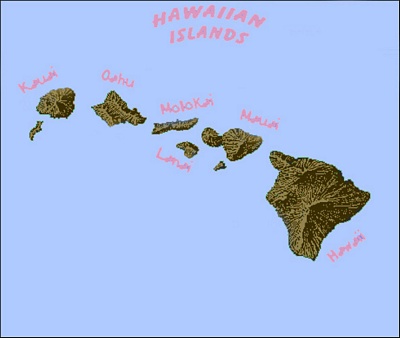
Aloha! Welcome to Hawai'i, the 50th state in the United States. Hawai'i
is composed of 132 islands, reefs, and shoals which stretch over 1,500 miles
southeast to northwest in the Pacific Ocean. It is on the same general latitude
as such cities as Hong Kong, Calcutta, and Mexico City. Most of the total land
area of Hawai'i is made up of eight major islands: Kaua'i, Ni'ihau, O'ahu,
Moloka'i, Lana'i, Maui, Kaho'olawe, and Hawai'i.
The Hawaiian Archipelago is the result of volcanic activity which began
25,000,000 years ago when a great crack appeared in the floor of the Pacific
Ocean. Hot volcanic rock passed through this opening, pushing its way upward for
millions of years. Thin layers of lava accumulated till a giant range of
mountains was formed. The eight major Hawaiian Islands lie at the southeast end
of this chain.
It is generally believed that Hawai'i was settled by Polynesians sometime
between 600 and 1000 A.D. They voyaged thousands of miles in double-hulled
canoes, possibly making the trip many times to bring their families, animals,
trees, and other plant life with them. They lived undisturbed for centuries on
their island paradise till January 18, 1778. Then, Captain James Cook, an
Englishman, discovered Hawai'i when he sighted the island of O'ahu. This
discovery altered the Hawaiians' lifestyle for all time.
After Cook's discovery, the Hawaiians' economic, social, and religious
order underwent drastic change. The coming of missionaries from America in
1820 greatly contributed to this development. Between the time of their arrival
and the formation of the Republic of Hawai'i, many rulers governed with
varying degrees of success. So powerful was the white man's influence upon these
monarchs that, by the beginning of this century, Hawai'i became a United States'
territory. In August of 1959, Hawai'i became the 50th state of the United
States.
Important Dates in Hawai'i's History
from Discovery to Statehood
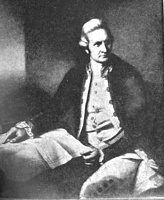
1778 Captain James Cook discovers Hawai'i on January 18th.
1795 Battle of Nu'uanu Pali is won by Kamehameha I, making him ruler of all
islands except Kaua'i and Ni'ihau.
1810 An agreement makes Kamehameha ruler of all Hawaiian Islands.
1819 Kamehameha II, son of Kamehameha I, becomes ruler.
1820 Protestant missionaries arrive from America.
1825 Kamehameha III begins reign.
1835 First sugar cane is commercially grown on island of Kaua'i.
1836 First newspaper is published.
1839 Bible is translated into Hawaiian.
1840 First written constitution is adopted.
1852 First Chinese indentured laborers arrive.
1854 Kamehameha IV becomes ruler.
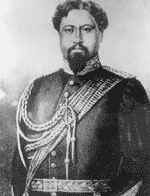
1863 Kamehameha V begins reign.
1868 First Japanese indentured laborers arrive.
1872 Kamehameha V dies without heir; custom of electing Hawaiian rulers
begins.
1872 William Lunalilo becomes ruler of Hawai'i.
1874 David Kalakaua begins reign.
1875 Treaty of commercial reciprocity with United States is
made.
1880 Telephone service begins in Hawai'i.
1887 Bloodless revolution on June 30th brings about new constitution with
three branches of government: legislative, executive, and judicial. White
minority wields most power.
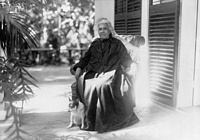
1891 Queen Lili'uokalani, Kalakaua's sister, becomes Hawai'i's first queen
and last monarch.
1893 On January 17th, a bloodless revolution marks end of Hawaiian monarchy.
A white minority becomes main decision-maker in Hawaiian affairs.
1894 On July 4th, the Republic of Hawai'i is formed with Sanford B. Dole as
president.
1898 On August 12th , the United States annexes Hawai'i.
1900 Hawai'i becomes territory of United States on June 14th.
1903 James D. Dole is successful in being first to can pineapple
commercially.
1908 Congress grants authority to make Pearl Harbor a naval base.
1920 Hawaiian Homes Commission Act of 1920 gives Hawaiians a chance to farm
on homesteads held on long leases at nominal rents.
1927 First flight between California and O'ahu is made by two Army
lieutenants. This flight ushers in air age in Hawai'i.
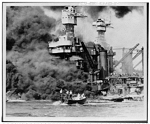
1941 United States is thrust into World War II when Japanese attack Pearl
Harbor on December 7th.
1945 Americans of Japanese ancestry from Hawai'i are among most decorated
soldiers in World War II. They serve with the 100th Infantry Battalion, later
incorporated into the 442nd Regimental Combat Team.
1952 Television makes its debut in Hawai'i.
1959 Jet aviation begins, making a trip between California and Hawai'i much
shorter.
1959 On August 21st, a bill making Hawai'i the 50th state in the United
States is signed into law. William F. Quinn is first governor.